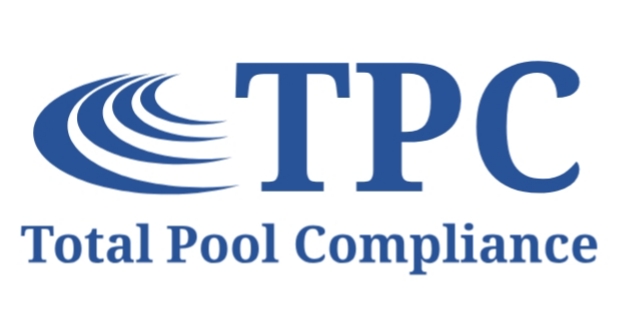The Top 8 Most Common Non-Compliance Issues
25 June, 2024

Throughout our many years of pool safety inspections, we have noticed some common themes amongst the pools that have failed our inspections. To prevent you from making the same mistakes, we’ve compiled a list of the top eight most common non-compliance issues found during pool inspections. We’re here to give you some friendly and helpful advice on how to pass your pool inspection the first time around.
1. Pool Gate Not Self-Closing and/or Self-Latching
Issue
Pool gates without self-closing or self-latching features can lead to many accidents. Without this, it could lead to children or animals entering the pool area without supervision, causing accidents as serious as drowning.
Recommendation
Ensure that the pool gate is fitted with self-closing hinges to close on its own. The gate should be capable of self-latching such that when it closes on its own, it can lock automatically. The gate should be serviced from time to time to make sure that it is in whole operation. Lubricate its hinges and latches to avoid sticking or malfunctioning. Make sure the ground around the gate does not prevent it from closing, either.
2. Furniture or Items Within the Non-Climbable Zone
Issue
Objects such as furniture, etc., that are kept around the pool fence inside the 900 mm non-climbable zone provide a toe or foothold and can assist a child in climbing over the pool fence. Hence, they defeat the purpose of the pool barrier and create additional risks of potential entry without permission.
Recommendation
Remove all furniture, pots, toys, and any object that would help get over the fence. Keep the pool area non-climbable by regularly inspecting the space around the pool fence. All adults in the household should be sure that children know why the non-climbable zone is to be kept free of obstacles.
3. Gaps Under the Pool Fence Exceeding 900mm
Issue
Gaps under the pool fence should not be more than 900 mm to prevent children or pets from crawling under and gaining access to the pool area.
Recommendation
You can easily measure the gaps under the fence and ensure they do not exceed 900mm. If necessary, adjust the ground level or the fence height. Consider installing additional barriers such as mesh or bottom rails to close any gaps. Periodically inspect the fence for any signs of ground shifting or erosion that might create gaps. If you have any pets, ensure that they do not dig under the fence and create a larger gap.
4. Pool Barriers Falling Short of the Required 1200mm Height
Issue
Built-up garden beds or built-up landscaping may reduce the effective height of the pool barrier and enable someone to climb over it more easily. A reduced barrier height compromises the pool’s security, increasing the likelihood of unauthorised access and accidental drownings.
Recommendation
The fencing needs to be retained at a minimum height of 1200 mm above garden beds and any other landscape elements abutting the fence. Garden beds and other landscaping elements can be relocated to maintain the specified barrier height. If necessary, install taller barriers or additional fencing to meet height requirements.
5. Non-Compliant Boundary Fences Due to Rail Positioning
Issue
Boundary fences with rails spaced 900mm apart, or less provide climbing points that make it easy for children to scale the wall. The rails placed too close together undermine the effectiveness of the fence as a safety barrier.
Recommendation
Adjust the positioning of the rails to ensure they are spaced more than 900mm apart. Consider using vertical barriers that are harder to climb compared to horizontal rails. Seek advice from fencing professionals to modify existing fences to comply with safety standards.
6. No Visible CPR Chart in Pool Area
Issue
Failure to display a CPR (Cardiopulmonary Resuscitation) chart in the pool area is a significant safety omission. In times of emergency, instantly available CPR instructions can be life-saving.
Recommendation
Ensure that a CPR chart is prominently displayed in the pool area, where it can be easily seen and referenced. Encourage familiarisation and potential training for all pool users regarding CPR processes and procedures. CPR charts can fade in the sun. Periodically check the CPR chart to ensure that it is legible and up-to-date with the latest guidelines.
7. Gate Latches Positioned Too Low
Issue
If the gate latch is placed too low, a small child may easily reach and release it, thus defeating the purpose of a safety gate. A low latch height can allow children to quickly open the gate and gain access to the pool area on their own, with a higher likelihood for accidents to occur.
Recommendation
Ensure the latch is at least 1500mm off the ground. Consider childproof latches since those are difficult for kids to operate. Do a check now and again to ensure that the latch stays secure and functions properly as per ‘non-compliance issue 1’.
8. Corroding or Deteriorating Pool Fences
Issue
Corroding pool fences or deteriorating boundary fences compromise the overall safety and integrity of the pool area.
Recommendation
Regularly inspect the pool fence and maintain it to recognise and make repairs when signs of corrosion and deterioration are present. Use corrosion-resistant materials in constructing pool fences, including aluminium or powder-coated steel. Any damage or wear in the barrier should be taken care of right away so the pool barrier can continue to function effectively.
Conclusion
We understand that pool inspections can be annoying and frustrating. Our aim at Total Pool Compliance is to streamline the process and make it as stress-free as possible for you. Follow this guide to try and prevent some of the most common non-compliance reasons for a failed pool inspection and help shorten the inspection process. If in doubt, call us for a consultation.
References
https://www.qld.gov.au/housing/buying-owning-home/pool-safety/tips
https://www.mypoolsafety.com.au/blog/2019/2/1/6-mistakes-for-pool-non-compliance
https://poolsafecompliance.com.au/dont-take-the-risk-with-pool-safety-non-compliance

